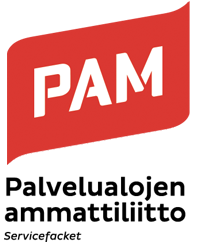Breaks, income and security
The collective agreements in the hotel, restaurant and leisure industry are now being negotiated in a completely different situation than two years ago. This should also be reflected in the collective agreement settlements for employees and supervisors in the sector, says PAM’s collective bargaining specialist Raimo Hoikkala.
Collective agreement negotiations have been going on in PAM sectors all through the late winter. The collective agreements in the hotel, restaurant and leisure industry end at the end of March. So the minimum terms agreed in these are wide open again and wages, working hours and other provisions have to be re-negotiated.
The collective agreement negotiations had just started with the Finnish Hospitality Association in 2020 when the Covid pandemic swept over Finland. An emergency was declared and the collective agreement period was extended. Wages lagged even further behind other sectors.
The Covid pandemic has had a huge impact. A large share of those working in the sector have suffered from extended lay-offs, uncertainty and income difficulties. Many PAM members have high expectations of an improvement in the situation – they want to get back to work soon. Expectations of the collective agreement negotiations for the sector have also increased.
“Pay in the sector has not improved like other sectors. One way to correct this would be to agree an earnings development programme with employers so that workers could live on their wages”, says PAM’s collective bargaining specialist Raimo Hoikkala.
Threat of inadequate income seen as a risk
The restaurant restrictions have made life for those in the sector a lot more difficult over the last two years.
Almost 80 per cent of hospitality workers who responded to PAM’s survey of members in November-December 2021 had been unemployed or laid-off. A full 72 per cent had planned to change jobs.
The results show that we are at the point where people see working in the sector as a risk to their livelihoods. In Hoikkala’s opinion something needs to be done about this.
“Fair employment terms and proper pay are key factors in making the sector attractive. That’s why it’s important to improve these aspects in the negotiations.”
PAM’s approach in the collective agreement negotiations is to agree employment terms that improve pay and the appeal of the sector. This is important for the future of the industry as a whole. There are already huge labour shortages in the sector. This isn’t made any easier by the fact that the number of applicants for education and training in the sector has halved between 2014 and 2021.
Future of the industry hanging in the balance
But the Covid pandemic has also cut the income of industry operators, so where will the money come from? According to Hoikkala, a solution to the situation has to be found with employers at the negotiating table. Otherwise the risk is that the future of the entire industry will hang in the balance.
“We don’t want this to be a sector where jobs aren’t viable. You have to be able to live and pay your bills on one salary.”
Wages paid in the hospitality sector are low. According to PAM’s survey, average pay is 2073 euros. In full-time work it is 2308 euros and in part-time work just 1653 euros. According to Statistics Finland, the median earnings of all full-time wage earners were 3217 euros in 2020.
“Due to Covid the entire industry is going through big changes and there will be even more part-time working. This change has been particularly noticeable in staff restaurants”, Hoikkala says.
The commonest reason for working part-time is that full-time work is not available, even if that is what someone wants to do.
“That’s why we have to find ways for part-time workers to anticipate their income better. We can develop ways to do this through the collective agreements.”
Regular income and definite working hours increase wellbeing at work. That is why we have to curb involuntary part-time work.
“The closer employees can get to full-time work, the better it is for their livelihoods”, Hoikkala says.
Collective agreements safeguard your rights
Besides Covid, there have recently been exceptional levels of publicity around the sector due among other things to deficiencies identified in cafes, restaurants and fast-food chains.
“The worst thing about these cases is that the same story gets repeated. Profits are maximised at the expense of employees. Even the minimum provisions of the collective agreement are not always applied. It’s not fair to the employee or to other operators either”, Hoikkala states.
Correcting the problems that have emerged is in the interest of the union and employers too. Impressions have a big effect on the attractiveness and appeal of the sector.
“In many areas companies have agreed higher standards than the minimum provisions of the collective agreement. So the negative image of the sector that has been projected isn’t the whole story.”
Hoikkala points out that constant time pressures and problems in working conditions are not the way to treat workers and change must be called for. People need to able to recuperate and take breaks at work. The collective agreements can influence these things.
“Everyone has to insist on their rights. This is basically what the collective agreement negotiations are about too – employees looking after their interests and minimum employment terms”, Hoikkala sums up.
Text:: Minna Räsänen



